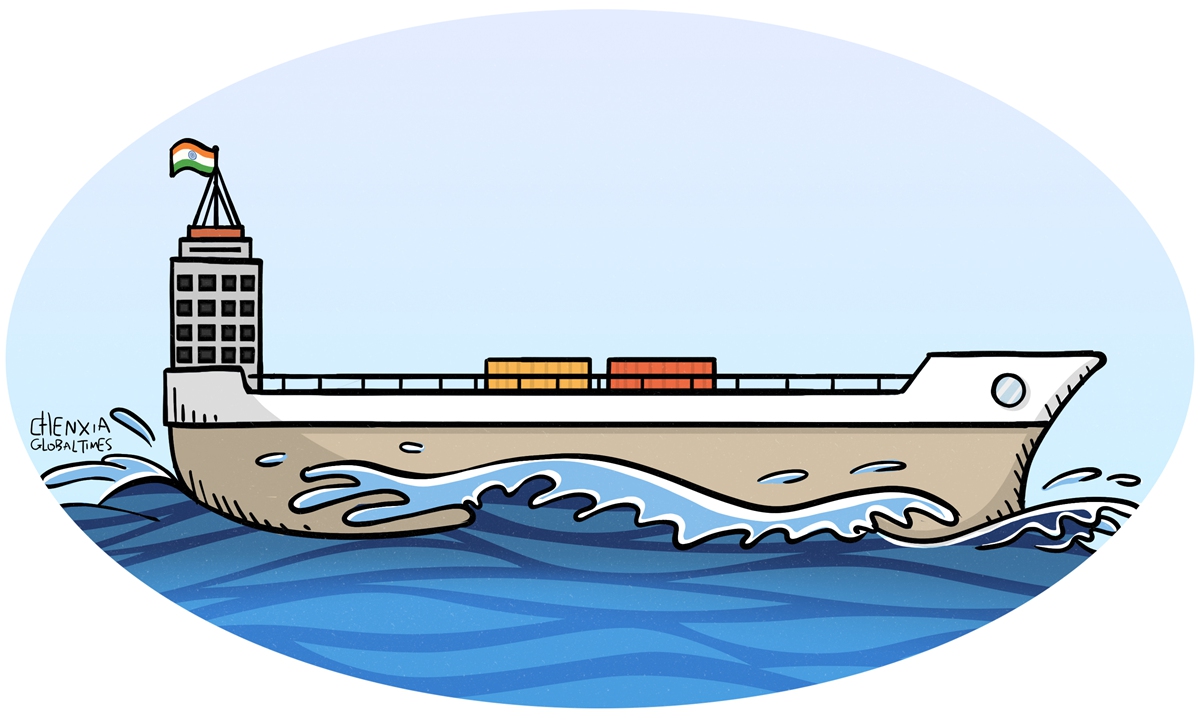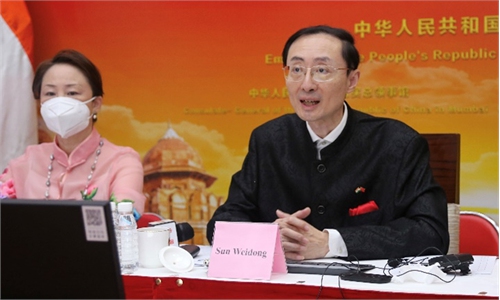
Illustration: Chen Xia/Global Times
India aims to raise the share of its exports in global trade to 3 percent by 2027 and 10 percent by 2047 from the current 2.1 percent, and promote hundred Indian brands as global champions, as part of the Indian commerce and industry ministry's hundredth year of independence year goals under the India@2047 umbrella, Indian media outlet Economic Times (ET) reported on Sunday.The ET's report came just before China's General Administration of Customs (GAC) released export and import statistics for the first three quarters on Monday, which showed India's exports to China plunged by 36.4 percent year-on-year in the first nine months in US dollar terms.
Although the growth in India's trade with the US and some other economies has resulted in an optimistic mood over the country's export prospects, the decline in India's exports to China shows inevitable challenges for India to achieve its export ambitions, given China's role as an important export market for Indian exporters. According to another ET report, China replaced the United Arab Emirates as the second-largest export destination for India in the fiscal year 2021.
India's surging trade deficit with China has consistently been a sensitive topic for some Indian politicians, and some have been calling for artificially reducing imports from China. However, the best solution to the issue is not to cut India's imports but to increase India's exports to China.
Since its accession to the WTO, China has been a strong advocate for free trade. Chinese officials have reiterated that the country has always attached great importance to the growth of imports and is willing to expand imports of cost-effective products that suit the demands of the Chinese market. India's export ambitions and China's supportive attitude toward imports and massive market create a space for the two countries to enhance mutually beneficial cooperation.
Unfortunately, however, India may miss out on opportunities because of the rise of domestic protectionism. Out of 382 foreign direct investment (FDI) proposals the Indian government received from Chinese firms, India approved only 80 as of June 29, after the South Asian country made it mandatory for FDIs coming to India from countries that share land border with it to get prior approval. Although FDI restrictions may in the short term help nurture a favorable environment for the development of Indian domestic companies, such efforts have inevitably hurt the industrial chains between China and India and hindered India's integration into the wider Asian supply chains, and therefore cut India's exports to China.
What India is pursuing is a different path to China in shoring up exports and making the nation the next world's factory. Over the past decades, inbound FDI has played an important role in China's economic development and export success. For instance, ten years ago, foreign invested enterprises accounted for over half of China's exports and imports, generating about 30 percent of Chinese industrial output. China's continuous efforts in opening up its domestic market, actively integrating into the global industrial chain and developing an export-oriented economy have contribute a lot to its export growth, and foreign invested enterprises play an important role in this process.
For a long time, India has been eyeing the goal of developing an export-oriented economy by making itself the next world's factory, but its current crackdown on some Chinese investment has hindered India's integration into the regional industrial chain and make India lose the exports that those enterprises might create. If India wants to reduce its trade deficit with China and achieve its export ambitions to become a big exporter in the world, actively attracting foreign investment from countries, including China, and further integrating itself into the global industrial chain is the most effective way.
The author is a reporter with the Global Times. bizopinion@globaltimes.com.cn



